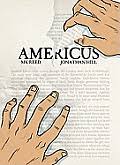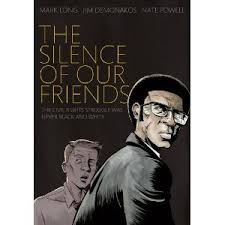

As 2011 draws to a close, it's time to share my list of 2011's "Very Best" graphic novels for kids (although I LOVED them and last time I checked, I was considered - by most- to be an adult). I am only a recent avid fan, and I rationalize my newly found passion by the fact that in the last few years this industry has exploded with diverse, quality, works that MUST be included in homes, schools, and libraries. I have included books with
intelligent content, and
quality art and prose.
So here are my recommendations (note that I have also included accessible web sites that either deal with important issues or have online previews and excerpts):
FOR KIDS 4-8
 Bake Sale
Bake Sale by Sara Varon
weaves a salivating tale of friendship, chemistry, and baking, and marching bands. It is about friends using creative ideas to help each other with life's dreams and unavoidable obstacles. Life's solutions (at least in this book) revolve around baking. There are seven recipes from classic cupcakes and cookies to sugared flower petals to marzipan. It is wonderfully heart-warming and creative. Please see this
YouTube clip for more about the book.
 Gunnerkrigg Court
Gunnerkrigg Court by Tom Siddell is a series of books about Antimony Carver, a girl with special talents attending a strange school called Gunnerkrigg Court. It is a fictional school in a fictional world and the story weaves political intrigue, science, fantasy and mythology into a beautifully (verbally and visually) told story. The books are published by Arehaia Studios Press but the stories are updated online three days a week at
Gunnerkrkigg Court.
 Nursery Rhyme Comics
Nursery Rhyme Comics edited by Chris Duffy is a compilation of nursery rhymes classics retold by 50 of today's most talented cartoonists and illustrators. Each rhyme is one to three pages long, simply paneled and lettered for an easy read for all ages, and each one is
a feast for the eyes and mind.
 Squish: Super Amoeba
Squish: Super Amoeba by Jennifer and Matthew Holm is about the world of single-celled friends (Squish, Peggy and Pod) and as they navigate school, bullies and life. It is wonderfully creative and these ameoba and paramecium move and interact with their environment in a very creative (and relatively true to life) way. It is a great introduction to pond life and the single-celled world and a great way to discuss fact, fiction, and an author's use of both to tell a story. I just loved this book and recommend it for home and school use. They have a second book out already (
Squish: Brave New Pond) with a third one coming out soon "
Squish: The Power of the Parasite"
 Zita Space Girl
Zita Space Girl by Ben Hatke - invites the reader from the first panel. Art and story are incredibly engaging for kids of all ages. This is a great book to read aloud or have your child read on their own. It is about Zita who knows she shouldn't touch an unidentified object while walking with her friend Joseph, but she just can't resist. (Sound like any child you know?). Even with Jacob's warning, she touches it and sending Jacob to another universe. She knows she must go to rescue him and embarks on the adventure of her life. For more details see my
previous post which has a YouTube video clip excerpting this book.
FOR KIDS 8-12
 Amelia Rules
Amelia Rules by Jimmy Gownley is a funny, witty, intelligent series of books that follow Amelia as she adjusts to life in a new town after her parents' divorce. These books deal with issues of friendship, loyalty, school, various family life issues, and social ' belonging' issues. Gownley shows (not tells) kids how they can navigate life's lessons in a wonderfully fun, supportive and empowering way, while dealing with very real issues. It is one of the best kid's book I've read in a long time. In 2011 alone, four different Amelia books have been published - the are ALL SUPERB and well worth the read. Here is a
YouTube video excerpt from one of the Amelia books.
 Anya's Ghost
Anya's Ghost by Vera Brosgol is a story about how a ghost (named Emily) who is 'rescued' by Anya when she falls down a well, helps Anya deal with the awkward teen years. She helps Anya address her self consciousness about her looks, her friends and being popular, with Anya's embarrassment of her family (they are very ethnic), and with her rebellious, confused emotions. It is a lovely coming of age book. Here are
the first 17 pages of the book, courtesy of First Second Books.
 City of Spies
City of Spies by Susan Kim and Laurence Klaven depicts life in the summer of 1942. Evelyn's dad is getting remarried and he sends her to her aunt's house in New York City. Evelyn discovers herself and with the help of Tony, the super's son, they uncover a German spy ring after seeing newsreels asking citizens to help in the war effort. It is exciting, empowering, and a lovely coming of age story. Here are
8 pages from the book, courtesy of First Second Books.
 Resistance (2010) and Resistance Book 2: Defiance (2011)
Resistance (2010) and Resistance Book 2: Defiance (2011) by Carla Jablonski & Leland Purvis is a story about World War II from the perspective of a boy, Paul Tessier and his family. In Book 1 the Tessiers have to decide how to live under German occupation as they weigh their options of joining the French Resistance, remaining 'neutral', or sympathizing with the Germans (in the hope of more and better rations and privileges). They also must decide whether to help Paul's best friend, a Jew. In book 2
Defiance the story continues. Paul is now 14 and he still wrestles with helping his beloved torn France.
Please view some excerpt pages.
 Rust: Visitor in the Field
Rust: Visitor in the Field by Royden Lepp is a gripping story of Roman Taylor who struggles in a world similar to ours (which looks a lot like dust-bowl Oklahoma) to save his family's small farm which was devastated by a war. One day a boy with a jet pack lands in the field and Romam begins to discover the secrets of Jet's past as he develops greater hopes for the future. This is really a story for young teens, older teens and adults, which I reluctantly place here. 20th Century Fox has already picked up the rights to this awesome story.
Please check out these preview pages.
 The Olympians (Zeus, Athena, Hera)
The Olympians (Zeus, Athena, Hera) by George O'Connor are a collection of books on Greek mythology. The latest is Hera. The story is true to classic Greek myth, and the illustrations and panel /page arrangements are breathtaking. Greek myths truly come alive in this series and it is a GREAT bet for any kids interested in Greek mythology. Note that
Hades is the fourth book coming out in 2012. I saw a galley and it is spectacular as well. Also note that each book comes with suggested lesson plans, suggested supplemental reading lists, and a family tree of the Greek gods.
Please view the first 12 pages, courtesy of First Second Books.
For 12+
 Americus
Americus written by MK Reed and illustrated by Jonathan Hill is about a book-loving boy from Americus, a small town in Oklahoma who eagerly awaits the latest edition of his favorite fantasy series starring a young sorceress who hunts monsters and tyrants. Trouble arises with a movement to ban it from the library. This book deals head on with bo
ok-banning in a sensitive, honest manner. The book appeared first
on the web (and while now only available in print, this is a very cool link that deals with book banning), and is now available in book form. Here is a 13-page
preview for those interested (compliments of the publisher, First Second Books).
 Feynman
Feynman written by Jim Ottaviani and illustrated by Leland Myrick visually an
d verbally illustrates Richard Feynman's life from his childhood in Long Island NY to his college days at MIT to his work on the Manhattan Project, career at Cornell and CalTech, his dramatic exposure of the Challenger disaster, his work on quantum electrodynamics and his antics in art and music (bongo drums). This work is an adaptation of Feynman's books ("
Surely You're Joking Mr. Feynman" and
"What Do You Care WHat Other People Think?" are two of my all-time favorite books) which are also well work a read. No science background is required for these books, although it may help with some sections. Here is a slide show
excerpt of the book.
 The Silence of Our Friends
The Silence of Our Friends by Mark Long, Jim Demonakos and Nate Powell is a semi-autobiographical story (about one of the author's father) who was a "Race Reporter" in Texas, 1976. It is actually not out until January 17, 2012, but is available on Amazon for preorder. I was given a galley to read and it is powerfully honest, sensitive, and does a spectacular job relaying a very complicated, troubled time in our history. It is the story of prejudice, humiliation, degradation and a living testament of the growing civil rights movement in Houston Texas. It talks about families who try to do the right thing, raise their kids' "righ
t", make mistakes, but mostly make an effort to find the right path in a questioning time. Here is a
preview - 13 pages from the book. It is sensitive, smart, and honest. A must read!
Honorable mentions from previous years:
Anne Frank: The Anne Frank House Authorized Graphic Biography by Sid Jacobson and Ernie Colon. The authors infuse this authorized biography with relevant history and perspective as Anne's story is retold. It is an excellent read in which World War II and the Holocaust come alive, and lives lost all to early are remembered.
 Drawing Words and Writing Pictures
Drawing Words and Writing Pictures by Jessica Abel and Matt Madden is a GREAT gift/book idea. I recommend it for kids ages 12+. It is actually written as a course and has won multiple awards including: BCCB Recommended Title, Publisher's Weekly Comics Week Best Comic of the Year. I has chapters on lettering, story structure, and panel layout and comes with homework, extra credit activities and supplemental reading suggestions.
I Kill Giants by Joe Kelly - a superb book about fifth grader Barbara who kills giants - we just don't know if she really kills giants, thinks she kills giants but is living (or retreating) to a fantasy world, or if this is a metaphor for something greater. Please see
previous blog post that illustrates how graphic novels like
I Kill Giants are not only enteratining, but actually help shape inference skills and critical thinking (it has some excerpts from the book as well).
Laika by Nick Abadzis tells the story of Laika, the first sentient being sent into space by the Russians and of the political posturing of the 1950's space race. Please see a
previous blog post of mine for more details.
Mouse Guard by David Petersen Please see a
previous blog post of mine for more details on this and other great reads. It is the story of Medieval Mouse times. It is already a classic work, the art and story are spectacular and it is well worth your time.
The Sons of Liberty by Alexander and Joseph Lagos tells the story of Colonial America with a bit of a twist as two young run-away slaves are are left with superpowers as the result of an encounter with Ben Franklin's son who was experimenting with electricity. This is the first story of a series and is wonderfully engaging.
The United States Constitution Please my December 5, 2011 post for more details about this truly outstanding publication which seeming effortlessly describes the United States Constituion (Preamble and Amendments) as well as providing background and perspective to this work of genius.
Tribes: The Dog Years by Michael Geszel and Peter Spinetta, art by Inaki Miranda is an outstanding science fiction adventure that considers the effect of a medical research lab's experiment with nano virus' gone awry. While there is some violence (hence the older age guideline) the story and art are spectacular and worth the read (for older kids and ALL adults). Please see
my previous blog post for details as well as
this post dealing with Tribes and social cognition. Here is a great YouTube post
trailer for Tribes: The Dog Years that is spectacular and shows you Inaki Miranda's spectacular art.
This is a long posting, but these are all spectacular books that I fell passionately about. Please leave some of your passionate suggestions as well - or questions.
What was so special about this exchange was that aside from distracting and entertaining Daniel, both mother and child learned how to adjust their choices and responses to the game. Furthermore, Mom was happy Daniel was occupied, Daniel was thrilled with his new game, he was learning and practicing adjectives and vocabulary, and what was about to turn into a shouting match, turned into a productive exchange between parent and child.

